How to Decorate Floating Shelves in Kitchen
Decorating floating shelves in the kitchen combines aesthetics and functionality, transforming ordinary storage into a display of personality and style. How to decorate floating shelves in kitchen becomes an important question for anyone looking to add a touch of elegance and efficiency to their culinary space.

The right decor not only enhances the visual appeal of your kitchen but also serves practical purposes, making everyday items accessible and organized. This guide will explore various creative ways to style your kitchen shelves, covering themes from rustic to modern and how to select items that are both beautiful and useful.
Whether you’re showcasing heirloom dishes or your collection of cookbooks, the ideas presented will inspire you to create a kitchen that reflects your taste while keeping your essentials within reach.
Selecting a Theme or Style
When decorating floating shelves in the kitchen, selecting a cohesive theme or style is paramount in achieving a harmonious look. Your chosen theme should reflect not just your personal aesthetic but also complement the overall design of your kitchen.
Whether you lean towards a Rustic appeal with its natural textures and earthy tones, a sleek and polished Modern look, the homey and welcoming vibes of a Farmhouse style, the clean lines of Minimalist decor, or an Eclectic mix that showcases your unique collection of items, ensuring consistency in your theme will set the tone for your shelving decor.
A. Choosing a Coordinated Theme
The key to a well-decorated kitchen is a coordinated theme that flows seamlessly with the rest of your space. If your home exudes a rustic charm, extending this style to your kitchen shelves by incorporating wooden elements and vintage finds can create a cohesive look.

Similarly, a modern kitchen benefits from minimalist shelving that showcases simplicity and clean lines. For those who prefer a farmhouse style, adding elements like mason jars, traditional pottery, and woven baskets can enhance the warmth of your kitchen.
B. Deciding on Color Scheme
Next, consider the color scheme. Whether you opt for Neutral tones that evoke a sense of calm, Bold colors that make a statement, or colors that Match your existing kitchen decor, the right palette can significantly affect the ambiance of your space. Neutral colors create a serene backdrop, bold hues add depth and energy, and matching your kitchen’s color scheme ensures visual continuity.
C. Considering Practicality
Above all, practicality should be a guiding principle in your selection. Decor items on your floating shelves should be aesthetically pleasing, functional, and easy to maintain. Choose items that you use regularly, ensuring they’re within reach and easy to clean.
This approach not only maximizes the utility of your space but also keeps your kitchen looking neat and orderly. By striking a balance between beauty and functionality, your floating shelves will serve as both a decorative and practical feature in your kitchen.
How to Decorate Floating Shelves in Kitchen: Displaying Functional Items
A. Organizing Cookbooks: Stacking Cookbooks or Recipe Binders for Easy Access and Visual Interest
Decorating floating shelves in the kitchen with cookbooks and recipe binders not only presents a splash of color and intrigue but also ensures that your favorite recipes are readily accessible. Stacking these books or binders allows you to create a visually interesting display that doubles as a cooking reference library.
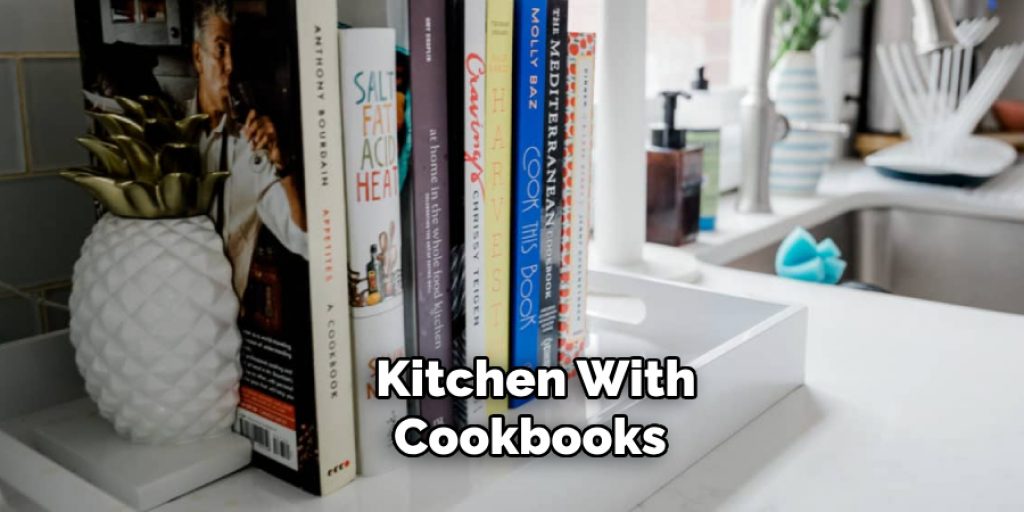
Consider organizing them by cuisine, color, or size to maintain a sense of order. This method of organization serves a practical purpose and transforms your cookbooks into a focal point of your kitchen decor, blending functionality with aesthetic appeal.
B. Storing Kitchen Essentials: Placing Canisters, Jars, or Baskets to Hold Spices, Utensils, or Dry Goods
Utilizing floating shelves for storing kitchen essentials in canisters, jars, or baskets is another effective strategy. This approach keeps spices, utensils, and dry goods within arm’s reach and adds a layer of texture and pattern to your kitchen’s overall design. Opt for containers that complement your kitchen’s theme or color scheme to maintain a cohesive look.
Clear jars can be particularly eye-catching, allowing the vibrant colors of spices and grains to enhance the visual appeal of the space. On the other hand, baskets can introduce a rustic or farmhouse touch, bringing warmth and familiarity to your kitchen environment.
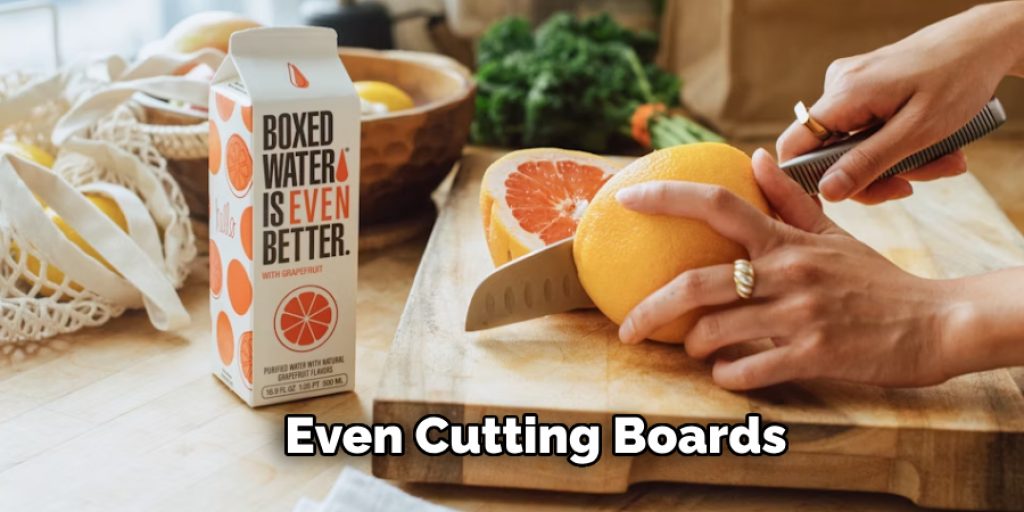
C. Showcasing Cookware: Hanging Pots, Pans, or Cutting Boards for Decorative and Space-Saving Storage
Floating shelves offer a fantastic opportunity to showcase your cookware in a decorative manner. Hanging pots, pans, or even cutting boards can turn these utilitarian items into art pieces. This not only saves cabinet space but also highlights the quality and style of your cookware.
Whether you display copper pans for a touch of elegance, cast iron skillets for a rustic vibe, or brightly colored cookware for a pop of fun, this method transforms ordinary kitchen tools into pieces of decoration.

Additionally, hooks or a magnetic knife strip can be integrated underneath the shelves for added functionality and style, ensuring that your most-used cooking tools are both showcased and within easy reach.
By carefully selecting and arranging cookbooks, essential kitchen items, and cookware on floating shelves, decorating them becomes practical as much as it is in style. This approach not only enhances the overall look of your kitchen but also capitalizes on the utility of every square inch, proving that how to decorate floating shelves in the kitchen can be both a creative and pragmatic endeavor.
How to Decorate Floating Shelves in Kitchen: Adding Decorative Touches
A. Incorporating Greenery
Introducing greenery elements, such as potted herbs, succulents, or fresh flowers, can infuse your kitchen with natural charm and vibrancy. Not only do these living elements add a pop of color and texture, but they also have practical benefits. For instance, potted herbs on floating shelves are not just aesthetically pleasing; they’re functional, offering fresh seasonings right at your fingertips.
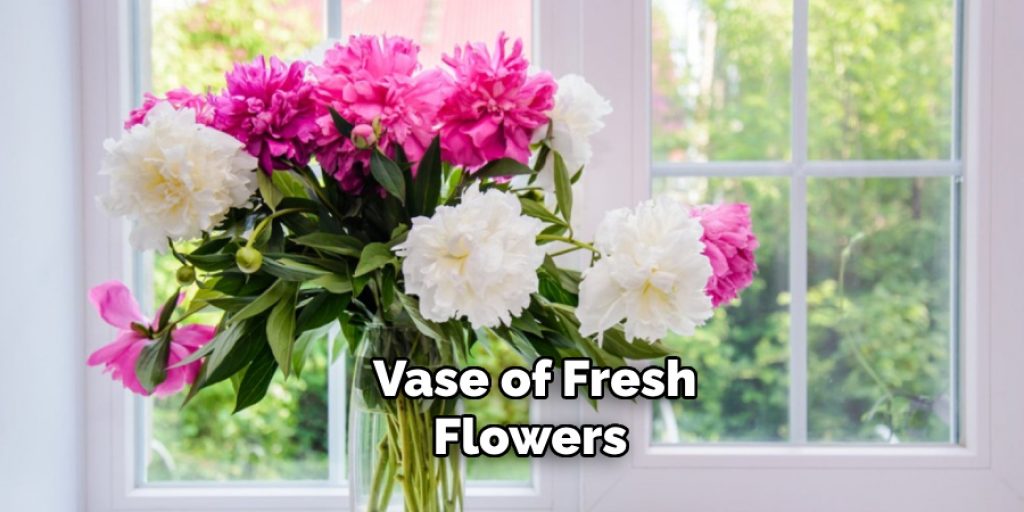
Succulents, known for their low maintenance, provide a touch of greenery without needing constant care, making them perfect for kitchen decor. Meanwhile, a vase of fresh flowers can brighten the kitchen, creating an inviting and refreshed atmosphere. This blend of beauty and utility enriches the kitchen’s ambiance, making it feel alive and welcoming.
B. Arranging Artwork or Prints
Hanging framed art, photographs, or inspirational quotes adds a layer of personalization that truly turns a kitchen into a reflection of one’s personality and tastes. Whether it’s a set of vintage culinary prints, family photos that evoke fond memories, or motivational quotes that inspire daily, these decorative touches make the space uniquely yours.
Artwork and photographs can also serve as conversation starters, adding depth and narrative to the kitchen. When selecting these items, consider your kitchen’s theme and color scheme to ensure they complement rather than clash with your existing decor. This thoughtful curation of art and imagery creates a more personalized, inspiring kitchen environment.
C. Layering Textiles
The strategic use of textiles like tea towels, linens, or napkins can introduce texture and color variation, enhancing the kitchen’s visual appeal. Draping elegantly designed tea towels over the oven handle or displaying them on hooks beneath shelves can add a splash of color and pattern.
Coordinating linens and napkins, perhaps placed in a basket on a shelf, serves a practical purpose and contributes to the overall design theme. Choosing textiles with colors or patterns that match or contrast with your kitchen palette can create unexpected visual interest. This layering of textiles introduces a tactile element to the kitchen decor, making it feel warm and homey.

By weaving these decorative touches—greenery, artwork, and textiles—into the fabric of your kitchen design, floating shelves become more than just storage; they transform into showcases of personality, style, and life. This thoughtful approach to decorating ensures that the kitchen is functional and a vibrant, inspiring space that reflects the owner’s lifestyle and tastes.
Mixing Materials and Textures
Incorporating diverse materials and textures into your kitchen décor, especially when using floating shelves, can significantly enhance the depth and character of the space. Strategically using wood, metal, and ceramic can create a dynamic and inviting kitchen atmosphere.
A. Introducing Wooden Elements
Wooden cutting boards, bowls, or serving trays provide a natural, warm touch to your kitchen’s aesthetic. Displaying these items on floating shelves brings an organic texture into the environment and adds a sense of warmth and homeliness.
Wood, with its natural grains and varying shades, can complement virtually any color scheme, acting as a neutral backdrop or a standout feature. Consider leaning a couple of beautiful cutting boards against the wall or stacking wooden bowls and serving trays neatly. This not only makes them easily accessible but also turns them into an integral part of the kitchen’s decor.
B. Adding Metal Accents
Incorporating metal baskets, wire racks, or decorative hooks can introduce an industrial flair to your kitchen.
When used judiciously, metal accents lend a modern, sleek edge to the space. Chrome, stainless steel, or even brushed brass finishes can counter the warmth of wood, creating a balanced, contemporary look. Metal baskets are great for storing fruits and vegetables or can be used to corral jars of utensils. Wire racks can provide a stylish storage solution for spices or dishes.
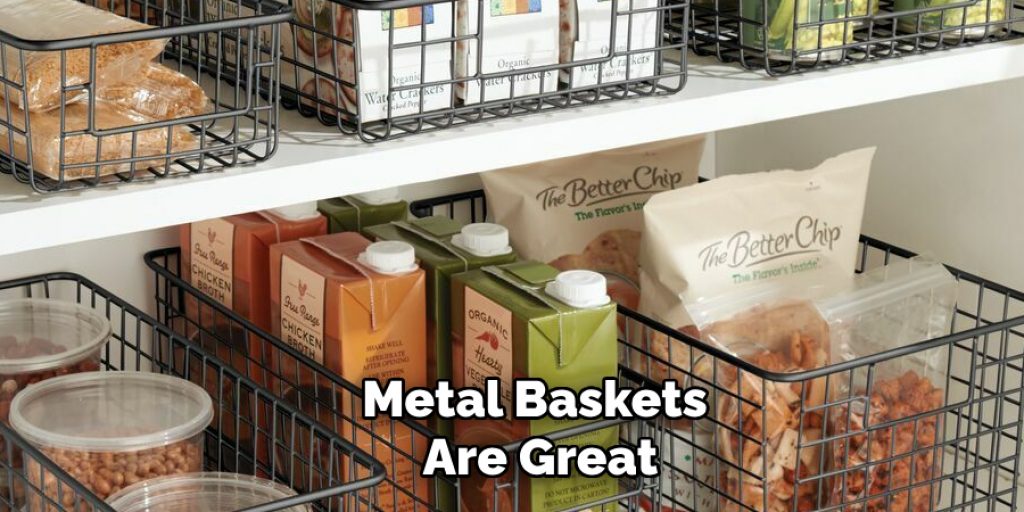
Aside from being practical, decorative hooks add a visual interest and a tactile quality that is distinctively different from other materials used in the kitchen.
C. Including Ceramic Pieces
Showcasing ceramic canisters, vases, or pitchers can bring any kitchen a timeless and elegant look. Ceramics, with their smooth surfaces and often handcrafted appearance, add a touch of artisanal quality to the décor.
Whether used for practical storage—like holding utensils or dry goods in canisters—or purely for decorative purposes, such as displaying a beautifully glazed vase or pitcher, ceramic pieces infuse the space with a sense of craftsmanship and attention to detail. The variability in textures, from glossy to matte finishes, allows for a subtle interplay of light and adds a layer of visual richness to the kitchen.
By mixing these materials and textures—wood for warmth, metal for a modern edge, and ceramics for elegance—you craft a kitchen that is not only highly functional but also visually compelling and inviting. This approach to decorating floating shelves encourages a harmonious blend of practicality and aesthetic appeal, making your kitchen reflect your personal style.
Creating Visual Interest with Groupings
Creating visual interest on your kitchen’s floating shelves can transform them into a focal point of your home. By thoughtfully grouping items, you can tell a story, evoke emotions, and reflect your personal style. Here’s how to curate your items for maximum impact.
A. Grouping Items by Color or Theme
Arranging items in cohesive sets based on color or theme can dramatically unify your space and make it visually appealing. For instance, a collection of blue glassware or ceramic pieces with a floral motif can create a serene, harmonious look.
Grouping by theme, such as rustic utensils, vintage spice containers, or modern minimalist vases, also lends a sense of order and theme continuity. This approach simplifies decision-making when selecting items to display and ensures that the décor complements the kitchen’s overall aesthetic.
B. Varying Heights and Sizes
Mix items of different heights and sizes to add interest and keep the eye moving. Place taller pieces, like elegant pitchers or large spice jars, at the back of the shelf, with medium-sized items in the middle, and shorter pieces, like small bowls or tea cups, at the front.
This layered look creates depth and dimension, making the display more engaging. Additionally, incorporating items of varying sizes can also help balance the shelves and make them look full without appearing cluttered.
C. Playing with Symmetry and Asymmetry
Symmetrical arrangements create a calm, balanced feel, ideal for a more traditional or formal kitchen setting. However, introducing asymmetry can add a dynamic element, giving the space a more modern or eclectic vibe.
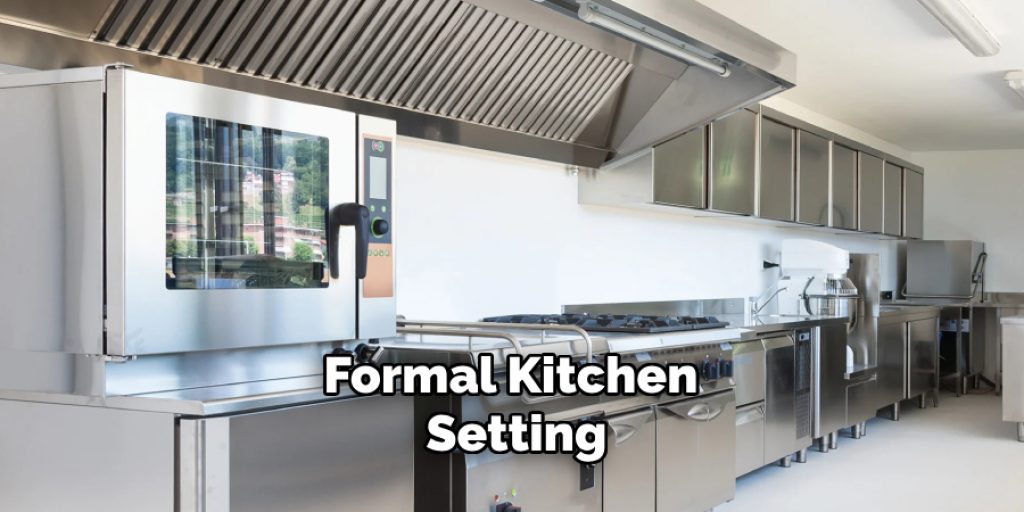
Try balancing a tall item on one side with a group of shorter items on the other, or use contrasting colors or textures to draw the eye. While symmetry provides a sense of order and predictability, asymmetry offers visual intrigue and keeps the display interesting and unexpected.
Implementing these strategies when arranging items on your kitchen’s floating shelves will enhance the aesthetics and make the space more enjoyable and personalized.
Utilizing Space-Saving Solutions
Creating an efficient and stylish kitchen often requires innovative solutions to maximize the available space. Here are some effective strategies to elevate your kitchen’s functionality and aesthetic appeal through smart organization and design.
A. Installing Hooks or Pegs
The use of hooks or pegs beneath floating shelves or on unused wall spaces provides a convenient way to hang mugs, cooking utensils, or oven mitts, keeping them within easy reach while saving valuable shelf and counter space.
This method organizes items neatly and turns them into decorative elements, adding personality and warmth to the kitchen. The strategic placement of these hooks or pegs can enhance the workflow in your kitchen, making cooking and cleaning processes more efficient.
B. Maximizing Vertical Space
Taking advantage of vertical space is key in a small kitchen. Adding stacked shelves above existing counter space or utilizing tension rods between shelves can create additional storage options without requiring more footprint.
This approach is perfect for storing items used less frequently or organizing spices, jars, and small containers, thus freeing up valuable worktop space for food preparation and other essential tasks.
C. Incorporating Under-Shelf Lighting
Under-shelf lighting, such as LED strips or puck lights, provides task lighting that makes reading labels and cooking easier and creates a warm ambiance, enhancing the overall vibe of the kitchen.

This illumination helps to showcase decorative items, making them stand out on the shelves and improving visibility in work areas. Additionally, LED lighting is energy-efficient, adding both functionality and sustainability to your kitchen design.
By integrating these space-saving solutions, you can achieve a kitchen that combines style, comfort, and practicality, making it a truly inviting heart of your home.
Rotating Seasonal Decor
Adapting your kitchen’s floating shelves to the changing seasons can rejuvenate the space and align its ambiance with the outside world. This section explores ways to refresh your décor harmoniously with seasonal transitions, ensuring your kitchen remains a dynamic and inviting space throughout the year.
A. Updating Decor with the Seasons
Swapping out decorative items to reflect different holidays or seasons is a simple yet effective way to keep your kitchen feeling fresh and timely. Consider displaying vases of fresh flowers or pastel-colored ceramics in the spring to evoke a sense of renewal. Summer might call for more vibrant hues and nautical themes, with items like brightly colored dishes or beach-inspired decor.
Autumn offers the opportunity to introduce rustic elements and warmer tones, such as burnt orange or deep red accessories, along with items featuring leaf motifs.
Winter, meanwhile, invites a shift towards cozy and festive elements, including holiday-themed decorations and sparkling lights, to create a warm and cheerful atmosphere during the colder months.
B. Incorporating Seasonal Colors and Textures
Each season has its color palette and textures that can be mirrored in your kitchen décor. For the fall and winter months, introducing warm tones, plush textiles, and richer, heavier materials can add a cozy feel to the space.
Add soft, knitted throws over chair backs, plush rugs underfoot, or velvet runners across your dining table. Conversely, spring and summer call for a brighter, lighter approach.

To celebrate these warmer months, incorporate bright colors, fresh flowers, and sheer, breezy materials. Changing out dish towels, placemats, and even decorative bowls or plates to match the seasonal colors can significantly impact.
C. Celebrating Festivities
Decorating your kitchen shelves for special occasions like Thanksgiving, Christmas, or birthdays can infuse the space with festive spirit. Tailor your décor to the occasion—use pumpkins and harvest-themed items for Thanksgiving, lights and ornaments for Christmas, or balloons and streamers for birthdays.
This personalizes your kitchen and makes the space more inviting and celebratory during these special times. Furthermore, incorporating handmade or sentimental pieces can add a layer of meaningfulness to your decorations, turning everyday moments into cherished memories.
By rotating seasonal decor, you refresh your space regularly and create a kitchen that’s always in sync with the time of year, making it an ever-evolving backdrop to your home life.
Personalizing with Sentimental Items
Creating a kitchen that feels uniquely yours involves more than just following design principles; it’s about imbuing the space with stories and memories that speak to your heart. Personalizing your floating shelves with sentimental items can turn an ordinary room into a sanctuary of nostalgia and warmth.
A. Displaying Personal Mementos
Integrating family photos, handwritten recipes, or even vintage kitchen tools inherited from loved ones brings a layer of personal history and warmth to your kitchen.
A faded recipe card from your grandmother, framed and displayed prominently, serves as a decorative piece and a tribute to cherished memories and traditions. Such mementos bridge the past and present, offering comfort and continuity amidst the daily bustle of kitchen activity.
B. Incorporating Travel Souvenirs
Travel souvenirs, whether they are trinkets, decorative plates, or artifacts, can add a unique and personal touch to your kitchen shelves. Displaying these items can serve as daily reminders of adventures and experiences, turning your kitchen into a gallery of your travels. Each piece tells a story, transforming the space into a personalized showcase of the world through your eyes.
C. Infusing Personality
Infusing your kitchen with items that mirror your unique personality and interests can transform it from a purely functional space into an expression of your individuality.
This might involve adding quirky or whimsical decor items that catch the eye and spark conversations. For instance, a collection of funky salt and pepper shakers, eccentric wall art, or a bright, patterned backsplash can all reflect your personal taste.
Similarly, displaying books, whether they are cookbooks or works of fiction that you love, on open shelving can invite a sense of comfort and curiosity. It’s also about finding beauty in the unexpected, such as repurposing an old, painted ladder for hanging pots and pans or using brightly colored ceramic pots to hold utensils.
These choices personalize the space and create a kitchen that’s as inviting and vibrant as it is functional. By weaving elements of your life story into the design, your kitchen becomes a true testament to your unique flair and passions.
Conclusion
Throughout this guide, we’ve explored myriad creative ideas for decorating floating shelves in your kitchen, from showcasing seasonal vibes and integrating thematic elements to personalizing spaces with mementos that tell your unique story.
We discussed the importance of incorporating both aesthetic appeal and functionality, ensuring that your kitchen remains a place of culinary creation and a platform for self-expression.
We encourage you to see your kitchen and its floating shelves as a canvas for continuous creativity. Don’t shy away from experimenting with different styles, layouts, and decorations. Remember, the best kitchens reflect the lives and loves of those who cook in them. Your personal touch is what will make your kitchen truly yours.
May this guide inspire you to explore the myriad possibilities of how to decorate floating shelves in kitchen, transforming them into a dynamic element of your home’s decor.
We hope you find joy in the process of styling your kitchen shelves, infusing them with charm and character that speaks to your heart. Here’s to a kitchen that inspires you every day!




